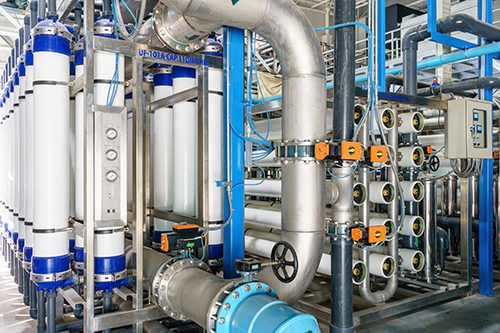The Problem
A large reverse osmosis (RO) plant at a Midwestern fertilizer facility was experiencing extreme fouling on their RO membranes. Makeup at this plant consists of municipal wastewater.
Cleanings with caustic and an incumbent service provider’s high-pH blended RO cleaner were performed frequently to mitigate the fouling, but the re-inoculation of mature biofilm was causing significant bacterial growth on the membranes. The incumbent chemical supplier was focusing on alternative biocides and feed rates and not looking to discover the root cause of these issues.
The Solution
ChemTreat completed a microbiological mapping of the entire RO and pretreatment setup to better analyze the system and determine next steps. Our team performed dip slide testing as part of the mapping and determined that 58–148 feet of pipe were exposed to bacteria growth after the dechlorination chemical was injected.
After reviewing the bacteria results and the membrane cleaning procedures, ChemTreat proposed a pipe cleaning using CL457 (hydrogen peroxide and surfactant treatment) to penetrate and flush the mature biofilm out of the pipe without coming into contact with the RO membranes.
Approximately 500 ppm of product was added to the pipe while the ultrafiltration permeate tank pumps were running. After feeding the product for one hour, the system was rinsed with raw ultrafiltration permeate for an additional 20 minutes.
The clean-in-place (CIP) procedure was supplemented with high-pH cleaning solution RL5000 to boost conductivity and target biofouling.
The Results
Samples taken before and after the pipe cleaning show that bacterial growth was reduced from 103 to less than 10 CFUs.

Right: RO makeup post-bisulfite feed and post-pipe cleaning
The pipe cleaning and treatment program improvements delivered many benefits to the customer over the previous supplier’s program:
68% reduction in CIPs per month
73% reduction in chemical costs per month
76% reduction in man hours per month
Membrane longevity is expected to significantly improve RO performance while lowering operating pressure and reducing permeate production costs.
Results are examples only. They are not guaranteed. Actual results may vary.

